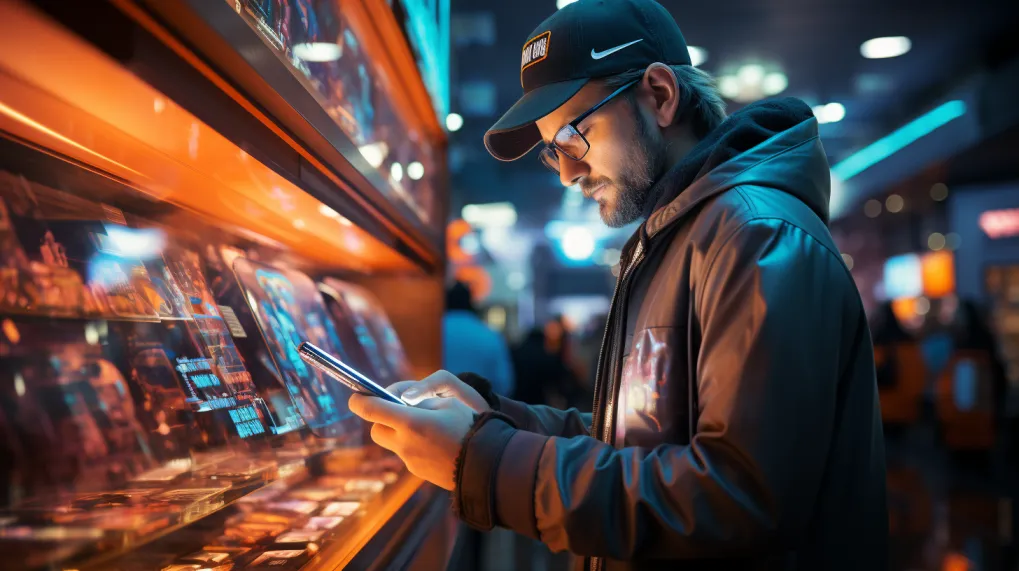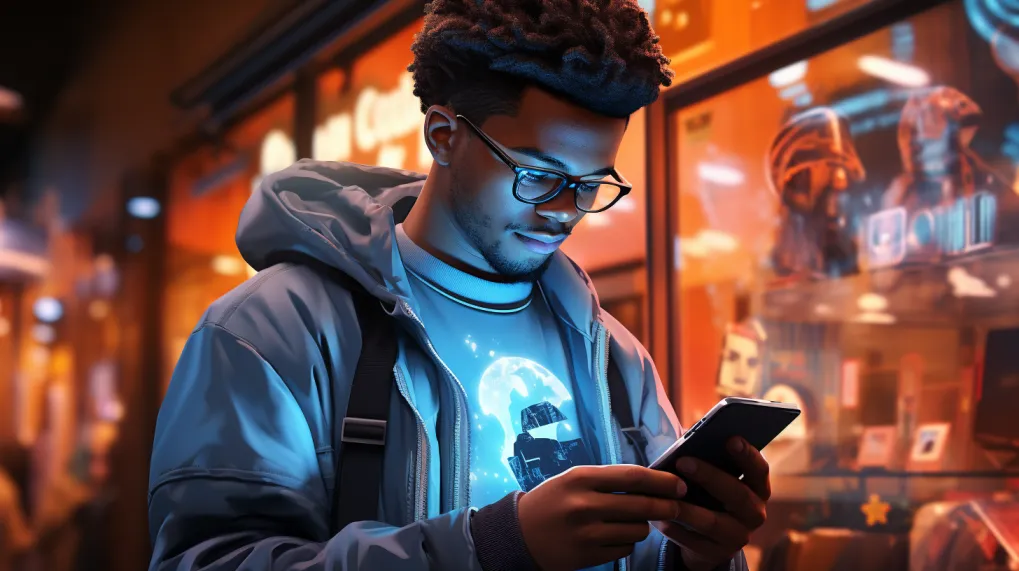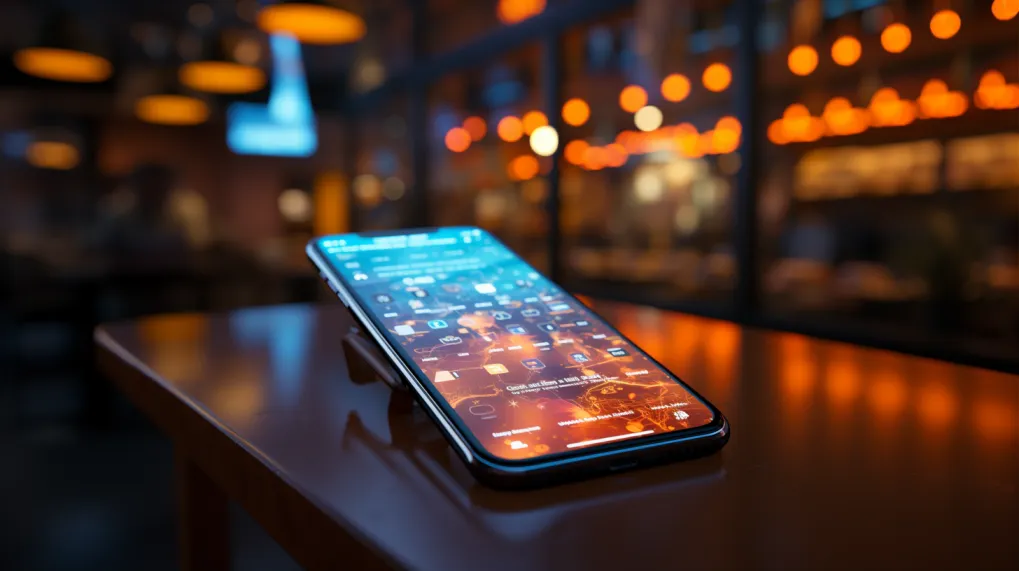Overview of Token Gating NFT
Token Gating NFT is a new idea using Non-Fungible Tokens (NFTs) to give special access to digital content. In this article we are going to discuss the top 12 ways Token Gating NFT can be used.
Pro Tip: When looking at different ways to use Token Gating NFT, think about who you want to reach. Unlock special access like a pro with unique tokens – nothing says ‘I’m better than you’ like an NFT!
Use Case 1: Exclusive Access Tokens
To give special access, Use Case 1: Exclusive Access Tokens with Creating VIP Clubs and Communities, Rewarding Loyalty Programs, and Protecting Sensitive Data and Information is introduced.
By using these tokens on the blockchain, you can give special rights to exclusive clubs and keep important information safe.
Creating VIP Clubs and Communities
Businesses make VIP clubs to keep customers. These special groups make people feel important and attract those who want to pay more. Four things make them work:
- Invite-only membership makes people excited.
- Special experiences make the club different from others.
- Forums, meet-ups, and events help people feel connected to the brand.
- User-made content makes the experience feel real. Plus, special access tokens can stop people who shouldn’t get in. Forbes Magazine says that 75% of people like brands more when they join an exclusive group. Being loyal pays off – it’s time to get rewarded!

Rewarding Loyalty Programs
Loyalty programs are needed in business. They thank loyal customers, which makes them come back and helps the business focus on the customer. To make a good loyalty program, businesses should use points, levels, referral rewards, birthday gifts, and special rewards.
But, to make a loyalty program work, businesses must be smart. To make it special, businesses should use exclusive access tokens. Working with other companies and making offers based on what people buy also helps.
In the end, a well-made loyalty program with special rewards, like access tokens, can make a big difference. It helps make more money, builds trust with customers, and makes the business stand out.
Protecting Sensitive Data and Information
Sensitive information must be kept safe from people who shouldn’t see it. New ways are being made to keep these things safe. One way is exclusive access tokens.
These digital keys let only the right people in. This way, sensitive information stays safe, and only people with permission can see it. Companies have better control without the risk of theft.
Exclusive access tokens are being used more now. Companies keep sensitive information online, which needs good security. These tokens make sure only the right people can get in.
A healthcare provider had many patient records stolen because of weak security. After this, they used an exclusive token system, which made their security better. With this system, only trained doctors can see patient records.
In the end, exclusive access tokens are a good way to keep sensitive information safe online. As technology gets better, so will ways to keep data safe and stop people who shouldn’t see it.
Use Case 2: Gaming & Esports
Want to make your gaming and esports more fun? Token Gating NFT is here to help. Here’s how you can use it to make your games better:
Unlocking Levels and In-Game Content
Playing games is fun, but unlocking new things makes it even better.
Here’s how you can do it:
- Give players new things when they finish a task or do well.
- Let players buy special items or features.
- Have events or contests with cool rewards.
- Let players make the game their own.
Unlocking new levels and things in the game keeps players interested. It also helps the game last longer and make more money.
For example, “Clash of Clans” made almost $2 billion from players buying things, says Tech Jury.
Enabling Collectibles and Trading Cards
Collecting and trading cards is big in gaming and esports. Blockchain technology is changing how this works. Here’s how:
- Special codes make sure you really own your collectibles.
- You can see where items come from.
- No more fake stuff.
- Quick trades without needing other people in the middle.
- Rewards to keep players interested.
- Anyone in the world can trade.
This new way of doing things is making gaming more fun. Plus, game makers can control how rewards are given out. Get ready for a whole new way to play!
One of the top 10 Companies in Esports is FACEIT, says Forbes. They have been part of Esports for a long time and work with Csingofy to host tournaments.
Enhancing Multiplayer Experience
Playing games with others is better than playing alone. Esports is making multiplayer gaming even better. Here’s how:
- Virtual and real-like gaming make playing feel real.
- Smart computer programs make playing fair and fun.
- Adding social media to games helps players talk and work together.
New games are also using big servers to make sure players all over the world can play without problems.
Forbes says that over 1 billion people love playing video games and watching esports.
Want to show off that you were at a sold-out concert? Blockchain can prove it. But you might need some luck explaining to your boss how you got those front-row seats!
Use Case 3: Event Ticketing & Verification
Going to an event? Token Gating NFT makes sure your ticket is real and gets you in and out safely. Here’s how it works:
Preventing Fake Tickets
No one wants a fake ticket. Here’s how to make sure tickets are real:
- Scan barcodes at the door.
- Use special stamps or marks that are hard to copy.
- Work with ticket sellers who watch for fake tickets all the time.
Tell people how you check tickets. If they know, they won’t try to make fake ones.
Pro Tip: Tell people to buy tickets from places you trust and to tell you if something seems wrong. That way, you’ll know if someone is trying to trick you. Don’t end up at the “Regret and Shame” party!
Making Sure Entry and Exit Are Safe
Getting in and out of an event should be easy and safe. Here’s how to do it:
- Mobile Tickets: Send tickets to phones, and scan them at the door.
- Face Scanning: Use cameras to match faces to pictures and information.
- Wristbands with Info: Scan wristbands with customer information.
Teach staff to spot fake IDs, watch security cameras, and know what to do in an emergency.
People have worried about security for a long time. Even the Romans used fingerprints on clay tablets to get into the Colosseum. Now we have better ways to keep people safe and happy at events.
Managing Ticket Resales
Selling tickets again? Here’s how to do it right:
- Check tickets to make sure they’re real.
- Don’t let people buy too many at once.
- Change prices to match how many people want tickets.
- Let people get their money back or trade tickets.
- Work with companies you trust.
- Use blockchain to make sure no one changes ticket information.
You can also make special offers or discounts to get people to come back. Good ticket rules make people feel good about buying and make the event a success.
Trying to get a ticket to a full event is like playing musical chairs. But instead of chairs, it’s tickets, and instead of music, it’s the fear of missing out!

Use Case 4: Digital Art & Collectibles
Want to know how Token Gating NFT is changing digital art and collectibles? Here’s how it’s making art special, proving who owns it, and helping people make money:
Making Art Special with Tokens
Turning art into tokens is about making digital copies and giving them a special name or number. These tokens make art special and easy to give to someone else.
Here’s what it looks like:
- What It Is: Making tokens to show who owns art
- How It’s Done: Making digital copies and giving them a special name or number
- Why It’s Good: Art gets a special name, and it’s easy to give to someone else
Blockchain keeps a safe list of who owns art and where it came from. This makes copying or faking art really hard.
The most expensive digital art ever sold was by Beeple. It sold for $69 million! Now it’s easy to show who owns art – even your cat’s picture that looks like the Mona Lisa!
Proving Who Owns Art
As more people like digital art, it’s important to show who owns it. Without this, art isn’t worth much. Blockchain helps by keeping a safe list of who owns what. It also makes rules for things like paying the artist when art is sold again.
Owners can show they really own the art with a record that can’t be changed. Everyone agrees on who owns what and when. This helps artists and people who collect art.
Don’t miss out! Your digital art might be worth more than you think!
Helping People Make Money with Art
More and more art is going digital! Artists and collectors have new ways to make money. They can sell digital art as special tokens called NFTs. This lets them keep track of who owns the art and prove it’s real. They can also make special prints and things with digital art to sell.
Art is easier to see and enjoy too. Artists can show digital copies of real art to more people. Museums can put pictures of paintings online for everyone to see.
Blockchain keeps a safe list of who buys and sells art. It’s easy and sure to show who owns art and that it’s real. Like when Beeple’s art sold for $69 million! This shows how much money can be made in the world of digital art.
Use Case 5: Copyright & Intellectual Property
Want to keep your creative work safe? Token Gating NFT can help. Here’s how it manages things like paying for licenses and keeping original creations safe:
Managing License and Royalty Payments
Dealing with licenses and getting paid for them can be tricky. Here’s what you need to think about:
- Contracts and Payments: Keeping track of agreements and when to get paid.
- Laws: Different places have different rules, so talk to a legal expert.
- Records: Keep good notes on what you agreed to and what you need to pay.
Don’t wait until it’s too late. Make sure you protect your work and respect others’ work too. Start using good ways to manage contracts and money now!
Keeping Original Creations Safe
Keeping your original work safe is very important.
That’s why we have laws for things like books, music, art, and computer programs. These laws stop others from using your work without asking. They also help you make money from your work.
These laws also help people come up with new ideas. They know their work is safe, so they spend time and money making new things. This helps everyone by making more creative things to enjoy.
The first law to keep work safe was made in 1710 in Great Britain. It helped authors keep their work safe for a while, to help people learn.
Making Things Clear and Easy to Follow
Making things clear and easy to follow helps keep your work safe.
How? By keeping track of where your work comes from and who helped make it.
This helps you show that the work is yours and stop others from using it without asking. Plus, you can find this information quickly if you need it in court.
This idea is not new. In the 16th century, people used special marks on paper to show where it came from. This stopped others from copying it. It shows that keeping work safe has always been important.
Why give to charity when you can post a nice message on Facebook?

Use Case 6: Donations & Fundraising
Want to help charities and fundraisers with Token Gating NFT? Here’s how it can make giving, tracking money, and being open and honest easier:
Getting People to Give
Getting people to give to charity is important. Here’s how to do it:
- Connect with People: Tell stories and show real examples of how the money helps.
- Make Giving Easy: Offer different ways to pay and make the process simple.
- Say Thank You: Let people know you appreciate their help.
You can also use fun ideas like crowdfunding, social media challenges, or online events to get more people interested.
Pro Tip: Show people where the money goes to earn their trust. It’s not just about the money; it’s about showing how it’s used.
Keeping Track of Money
Knowing where the money goes is key for charity. Here’s one way to do it:
- Make a Table: List the donor’s name, how much they gave, when, and why.
Also, keep good notes on how you spend the money. This helps get more people to give.
Being Open and Honest
Being clear and responsible is very important for charity. If people know where their money is going, they’re more likely to give. Charities need to be clear about their money to keep people’s trust.
Here’s how to do it:
- Give Updates: Share what you’re doing, show how the money helps, and tell people what you plan to do next.
- Have Audits: Let a third party check your money to show you’re doing things right.
The Red Cross had problems in 2010 because people thought they didn’t use the money right after the Haiti earthquake. Being clear about money is key to avoid problems like this.
Transparency might be hard, but it helps build long-term trust and respect with people who give.
Use Case 7: Identity & Access Management
Want to make sure only the right people can see your personal information? Token Gating NFT can help with that. Here’s how:
Making Sure You Are Who You Say You Are
It’s important to make sure only the right people can see certain information. Here’s how to do it:
- Two-Factor Authentication: Use a password and a special code from your device.
- Facial Recognition: Make sure the person using the account looks like they should.
- Biometric Authentication: Use things like fingerprints or eye scans.
Special computer programs can even spot and stop strange activities to keep information safe. Some businesses use special technology to keep records safe and private.
People have been checking who others are since Ancient Greece. Voters had special tokens to show who they were before voting.
Controlling Who Can See What
Controlling who can see what is a big part of keeping information safe. Here’s a 3-step guide to do it:
- Find What Needs Protecting: Look at your information and see what needs to be kept safe.
- Make a Plan: Write out how you will check who people are, what they can do, and how to manage passwords and other controls.
- Use Your Plan: Use special tools to put your plan into action, like controlling who can do what and how to approve or change things.
Technology is always changing, like using body features to check who people are. Organizations need to keep up with these changes to stop the wrong people from getting in.
The big problem at Equifax in 2017 shows why this is so important. Bad security let people see over 146 million records. Keeping personal information safe is like keeping a treasure chest safe, but instead of gold coins, it’s full of secrets.
Keeping Personal Information Safe
Personal information must be kept safe from the wrong people and from being lost or stolen. Identity and Access Management (IAM) helps with this.
IAM makes sure only the right people can get in and do what they should. It helps stop hacking, tricking people into giving information, stealing identities, and other problems. I
AM also helps meet special rules like GDPR, HIPAA, or PCI DSS. It controls who can do what and checks how security is managed.
IAM makes it easier to manage many accounts by putting them all into one. This helps people remember their passwords.
Pro Tip: Make sure IAM fits with how you keep things safe, and teach people how to use it right.

Use Case 8: Real Estate & Property Management
Want to know how Token Gating NFTs can change the way we buy and sell property? Let’s look at how it can help with owning and trading real estate, and even let more people get involved.
Turning Properties into Digital Tokens
Turning properties into digital tokens means making digital pieces for real estate or other things you can touch. It’s a safe way to change who owns something. Plus, it lets more people get involved, even if they don’t have a lot of money.
Here’s an example:
| Property Address | Token Price | Total Tokens | Tokens per Square Foot |
|---|---|---|---|
| 123 Main St. | $1000 | 10,000 | 1 |
People can buy as many or as few tokens as they want. This means more people can invest in one property.
A fancy hotel in Aspen made $18 million by selling tokens this way. Now, even regular people can get involved in things that used to be only for the very rich.
Buying and selling property with tokens is like a relationship. You need trust, clear talking, and good rules.
Handling Who Owns What and Trades
Handling who owns property and trades needs to be clear, safe, and right.
Using technology can make this easier, faster, and better. This includes digital copies of titles, signing online, and paying online.
Good talking between renters, owners, and property managers is also important. For example, renters can ask for repairs online for quick help.
A friend bought two homes through a company that uses technology. It was fast, with little paperwork, and a smooth change of ownership. Why own a whole property when you can own just a part? It’s like having a cake and eating only one piece!
Letting More People Own Parts of Property
Letting more people own parts of property is changing how we buy and sell homes. By breaking down properties into smaller parts, more people can invest. You don’t need a lot of money to start – you can just buy a part of the property, sharing the good and bad with others.
What’s good about this?
- Lower Costs to Start
- More Choices
- Lower Risks
- Maybe More Money Back
Plus, special software makes it easier to manage shared spaces between owners. Platforms give fair voting rights and share money fairly. No more problems with old ways.
Want to invest without spending a lot? Don’t miss out on owning parts of property. Get safe investments without big costs or risks. Start looking into owning parts of property today!
Use Case 9: Supply Chain and Logistics
Want to make your supply chain and logistics better? Token Gating NFT can help. It uses blockchain technology to track products and make things more open and honest. With Token Gating NFT, you can handle product and stock data more easily. Plus, you can make sure that buying and selling in the supply chain are safe and fast.
Making Tracking and Being Open Better
Tracking and being open are key to making supply chain and logistics work well. Knowing where goods are and watching them move can help businesses handle their stock, cut down on waste, and deal with risks. Here are some ways to do this:
- Use a digital tracking system: Know where products are and what’s happening to them. Share this info with everyone involved.
- Work well with suppliers: Set clear rules and watch quality.
Working together within a business is also key. This means making sure buying, making, storing, and moving things work well with the data collected.
Handling stock is like playing Jenga – but it’s not just wooden blocks, it’s also your money that’s at risk!
Handling Product and Stock Data
Having a place with info like what products are, how much is in stock, where they are, and who supplies them is key. This info can be used to watch stock and make supply chain management better.
Plus, a system to watch sales and what people want helps plan for supply needs and avoid running out. This makes things work better, saves money, and makes customers happy.
Real-time data is also key. Online shoppers want to know what’s available now – if they don’t, you lose sales or make customers unhappy.
Did you know? People have been managing supply chains for hundreds of years. Today, technology like analytics, automation, and AI makes this much faster and safer.
Making Buying and Selling Safe and Fast
The supply chain and logistics world wants safe and fast buying and selling. Blockchain is a new tech that can stop cheating, cut costs, and make things more open.
It automates tracking shipments, checking rules, and handling suppliers. Blockchain keeps a permanent record of each sale, which makes things more accountable.
One cool use of blockchain in supply chain is turning customs paperwork into digital form. This makes paperwork simpler and speeds up moving goods across borders.
Pro Tip: Start small with blockchain tech in supply chain/logistics. Try a small program first. It will help find any problems before putting a lot of money into a new system. Make the world better with tech solutions that help people and the planet!
Use Case 10: Social Impact & Sustainability
Want to make a difference in the world? Token Gating NFT can help. This technology can be used to support the environment and society. Let’s explore how Token Gating NFT can be used to promote good causes, make sure businesses act responsibly, and encourage people to live sustainably.
Supporting Environmental and Social Causes
Companies today need to do their part to help the environment and society. Blockchain technology can make this happen.
It can make sure that supply chains are fair, transparent, and good for the planet. Smart contracts can also make sure that everyone in the supply chain does the right thing.
Blockchain can also help create projects to protect nature and help people in need. This can make staff and customers more aware and help build a positive brand.
Some companies, like Patagonia, have been working to save endangered species, cut carbon emissions, and promote good practices for years.
Businesses should see supporting social impact and sustainability as a chance to help society and grow over time. Blockchain technology offers many ways to reach these goals.
Being good isn’t just about following rules; it’s about doing the right thing, even when no one is watching.
Making Sure Businesses Act Responsibly and Ethically
Acting responsibly and ethically is a must. This means using resources wisely, treating workers well, and cutting down on harm. These actions can affect a company’s reputation, customer loyalty, and future success.
To make sure businesses act right, they need to create rules that promote honesty, responsibility, and following the law. Building trust with suppliers, customers, workers, investors, and the public is also key.
An interesting fact: In 2020, Kantar found that over half of customers would switch brands if the company’s values didn’t match their own.
Encouraging Sustainable Living
Living sustainably is key for social impact and sustainability. Incentives can help people change, creating a ripple effect. Here are some ideas to encourage sustainable living:
- Give discounts for green products and services.
- Reward people for biking and carpooling.
- Use games and contests to make saving energy fun.
- Hold events that promote saving water, reducing waste, and other good practices.
Sustainable business practices can also help companies. They can lead to a better reputation, loyal customers, happy workers, and new investors. Sustainable living benefits everyone and helps us reach long-term goals.
Governments have used fines and taxes to discourage certain actions. Now, they are using rewards and tax breaks to encourage responsible living.
To succeed in the long run, we all need to care about the environment. Incentives can help us change our behavior.
Decentralized finance, or ‘DeFi,’ is a buzzword, but it’s also a way to make a difference. Let’s use it to make the world a better place!

Use Case 11: Decentralized Finance (DeFi)
Decentralized Finance, or DeFi, is changing the way we handle money. With Token Gating NFT, DeFi is more accessible, manageable, and secure. Let’s dive into how this technology can make finance better for everyone.
Making Liquidity and Loans Accessible
Getting loans and liquidity has been tough, especially in developing countries. But DeFi is changing that. Without banks or credit agencies, anyone with crypto can access loans and liquidity.
DeFi lets you transact directly with others on an open network. This opens doors for those left out of traditional finance. Plus, DeFi offers various lending and borrowing options.
Want to earn interest? Lend your crypto in DeFi. Lenders earn, and borrowers get funds without high rates.
But be careful. Understand DeFi and its risks. Use established DEXs like Uniswap or SushiSwap, and watch out for scams.
Remember, investing in DeFi is like playing chess against a smart contract that knows your every move.
Managing Investments and Yields
Managing investments and yields in DeFi is crucial. Smart contracts let users automate strategies, saving time and effort. Here’s a look at popular techniques and protocols:
- Liquidity Provision: Uniswap, SushiSwap, Curve
- Staking and Farming: Aave, Compound, Yearn.finance
- Yield Aggregation: Cream Finance, Harvest Finance, Alpha Homora
Options trading and lend-borrow strategies offer higher yields but come with risks. DeFi lets you grow wealth while keeping control of your assets. Explore DeFi and maximize your returns. And always remember: trust no one – trust DeFi!
Boosting Security and Privacy
Blockchain technology has transformed DeFi, making financial transactions more secure and private. Decentralization means no single point of failure, making hacking harder.
Smart contracts use encryption to keep user data safe. Blockchain shows transactions but uses public and private keys to protect identities.
Decentralized exchanges have no middlemen, keeping thieves away. Peer-to-peer networks reduce the risk of manipulation, building trust in DeFi.
The 2014 Mt. Gox hack was a wake-up call about security on centralized exchanges. Since then, DeFi has risen as a solution, using blockchain for a safer, more private financial system.
Unlock the potential of blockchain-powered education in Use Case 12!
Use Case 12: Education & Learning
Token Gating NFT is not just for finance or art; it’s also transforming education and learning.
Implementing Accreditation and Verification Systems
Quality education needs accreditation and verification. Accreditation ensures schools and courses meet standards, while verification confirms the validity of certificates. Here’s how they work:
Accreditation:
- Conducted by third-party organizations.
- Analyzes objectives, policies, facilities, faculty qualifications, and student outcomes.
Verification:
- Verifies certificate authenticity through relevant authorities.
- Reviews documents for accuracy before approving certification requests.
Different countries have different accrediting agencies. Certified documents help people get global employment opportunities.
As Education Degree says, “Certificates prove a person’s educational background or expertise.” So, get ready to shine on LinkedIn with microcredentials and certifications!
Enabling Microcredentials and Certifications
Microcredentials and certifications are the new must-haves. They boost your portfolio and open career doors. Here’s how:
Types of Programs:
- Online Courses: Coursera, edX, Udacity
- Professional Certifications: PMP, AWS, Six Sigma
- Bootcamps: General Assembly, Flatiron School, Ironhack
These flexible, affordable courses bridge educational gaps and let you learn by doing. Plus, you join a community of like-minded learners.
For example, a freelance writer lacking experience took an online social media marketing course. With that certification, he got more job offers. Who needs textbooks when you can binge on Wikipedia?
Enhancing Learning and Knowledge Sharing Experience
Tech in education offers endless opportunities. Digital curriculum, AI analysis, and gamification turn students into active learners.
Online platforms connect educators and students globally. AI-backed chatbots boost engagement. Personalized learning lets students learn at their pace. Videos and animations make learning fun.
Tech has revolutionized education. MOOCs, LMSs, and VR classrooms let students learn from top experts, anywhere. Digital credentials are as valid as traditional degrees.
Tech trends impact every industry.
Educational institutions must adopt them or be left behind. So, embrace tech in your educational journey now!







